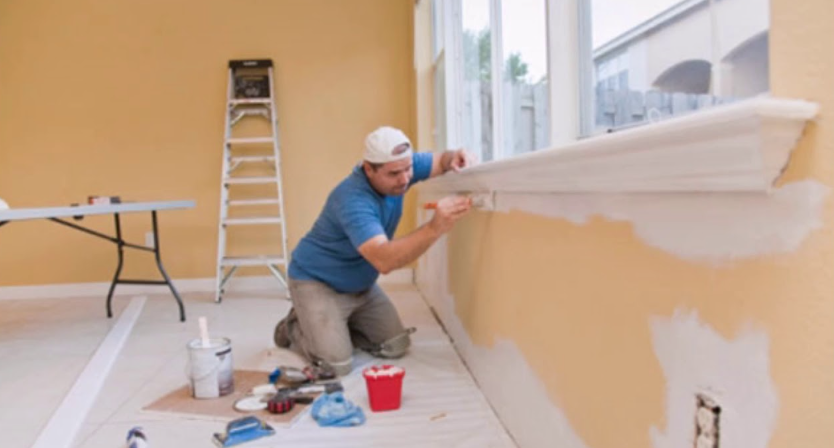Whether you are taking the DIY route or hiring professionals, understanding the common pitfalls of a painting project can save you time, money, and frustration. Many homeowners in need of Painting Services in Short Hills, Millburn, NJ often face similar challenges that can affect the quality and longevity of the finish. Knowing what these mistakes are and how to avoid them is the key to achieving a flawless paint job.
Not Preparing the Surface Properly
One of the most frequent mistakes is skipping or rushing surface preparation. Paint adheres best to clean, smooth, and dry surfaces. If the walls are dusty, greasy, or peeling, the paint may not bond well, leading to peeling, bubbling, or uneven coverage.
How to Avoid It:
- Clean surfaces with mild detergent and water to remove dirt and grease.
- Scrape off flaking paint and sand rough spots for a smooth finish.
- Repair cracks or holes with filler and allow it to dry completely before painting.
Choosing the Wrong Paint Type
Not all paints are created equal, and using the wrong type can lead to poor results. For instance, using flat paint in a high-moisture area like a bathroom can cause mildew problems, while glossy paints may highlight wall imperfections.
How to Avoid It:
- Select paint formulated for the specific surface and environment.
- Use mildew-resistant paint for bathrooms and kitchens.
- Consult professionals for the right sheen and formulation for your project.
Skipping Primer
Many homeowners believe that primer is optional, but skipping this step often results in blotchy coverage and reduced durability. Primer helps paint adhere better, evens out color differences, and seals porous surfaces.
How to Avoid It:
- Always use primer on new drywall, bare wood, or stained surfaces.
- For dark-to-light color changes, use a tinted primer to improve coverage.
Painting in Poor Conditions
Temperature and humidity significantly affect paint application and drying. Painting in extreme heat can cause paint to dry too quickly, leading to visible brush marks, while high humidity can delay drying and promote bubbling.
How to Avoid It:
- Paint when temperatures are between 50–85°F and humidity is moderate.
- Avoid painting in direct sunlight or during rainy, humid weather.
Using Low-Quality Tools and Materials
Trying to save money on cheap brushes, rollers, or paint often backfires. Low-quality tools can cause streaks, lint deposits, and uneven coverage, while inferior paint may require more coats and fade faster.
How to Avoid It:
- Invest in high-quality brushes and rollers suited for your paint type.
- Choose reputable paint brands with proven durability.
Overloading the Brush or Roller
Dipping too much paint at once leads to drips, runs, and an uneven finish. It also makes it harder to maintain consistent coverage.
How to Avoid It:
- Load the brush or roller evenly, removing excess paint before applying.
- Apply thin, even coats and allow adequate drying time between layers.
Not Using Painter’s Tape Correctly
Many people use painter’s tape but fail to apply it properly, resulting in paint bleeding under the edges or peeling paint when removed.
How to Avoid It:
- Press the tape down firmly to ensure full adhesion.
- Remove the tape slowly at a 45-degree angle while the paint is still slightly wet.
Ignoring Safety Precautions
Painting might seem harmless, but ignoring safety can lead to accidents or health issues. Fumes from oil-based paints and solvents can be harmful if inhaled for extended periods.
How to Avoid It:
- Wear masks, gloves, and safety goggles when necessary.
- Ensure proper ventilation when painting indoors.
- Use ladders safely and avoid overreaching.
Rushing the Process
A rushed job often results in uneven coverage, missed spots, and visible brush or roller marks.
How to Avoid It:
- Allocate enough time for preparation, painting, and drying.
- Apply at least two coats, allowing each to dry completely.
- Step back periodically to check for missed areas or uneven application.
Neglecting Clean-Up and Maintenance
Leaving paint cans open, brushes uncleaned, or tools poorly stored can waste materials and make future touch-ups more difficult.
How to Avoid It:
- Seal paint cans tightly and store them in a cool, dry place.
- Clean brushes and rollers immediately after use.
- Keep leftover paint for touch-ups, labeling the can with the room name and date.
Conclusion
Avoiding these common painting mistakes ensures a smooth, professional-looking finish that lasts for years. By focusing on preparation, choosing the right materials, and applying paint with care, you can transform your space effectively. Whether you plan to handle the project yourself or rely on expert help, taking the time to do it right will always pay off in the long run.





